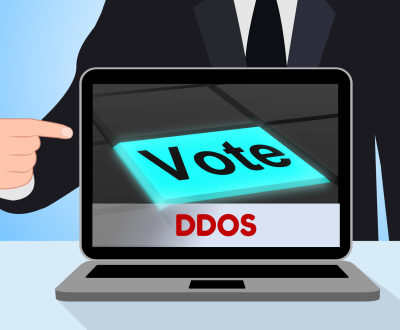Configuring Collaboration Between NTA and ADS
September 15, 2022
This document describes how to configure collaboration between ADS and NTA. NTA offers network monitoring and DDoS attack detection. If a DDoS attack is detected, NTA starts collaboration with ADS according to pre-defined rules to notify ADS. Then ADS starts the traffic diversion mechanism to divert suspicious traffic from the router or switch to ADS. […]
Viewing BGP Status of ADS and Troubleshooting
September 14, 2022
Viewing the BGP neighbor status of ADS Choose Diversion & Injection > Diversion Route > BGP Route. In the Route Daemon list, click the Neighbor Status button in the Operation column to view the status of a specified BGP route, as shown in the screenshot below. The displayed page shows the information of BGP neighbors. […]
Large-scale DDoS Attacks Target Many Critical Industries as Election Approaches in Brazil

September 13, 2022
1. Background As early as 2016, a report from BitSight, an American cybersecurity ratings company, showed that Brazil is one of the riskiest countries to do business in. According to the cyber threat report released by SonicWALL, Brazil suffered more than 33 million intrusion attempts in 2021, and suffered ransomware attacks second only to the […]
Configuring Collaboration Between ADS M and NTA
September 1, 2022
ADS M can manage NTAs, including checking NTA running status, time synchronization, dispatching IP group configuration of a region, displaying traffic information of NTAs, and receiving logs uploaded from NTAs. The steps to configure the collaboration between ADS M and NTA are as follows: Configuring NTA Step 1: Choose Administration > Third-Party Interface > Management […]
Description of NIPS Discarding Jumbo Frames in MPLS Traffic by Default
August 25, 2022
When there is MPLS traffic in the network, there may be jumbo frames whose layer 2 packet including the CRC code has a length greater than 1518 bytes. The NIPS network interface card directly discards these jumbo frames by default, causing network failure. Perform the following check on the client side: 1. Test the client-side […]
Introduction to Web APIs of ADS
August 18, 2022
O&M personnel can quickly and easily perform operations such as information query and diversion configuration through web APIs. If web APIs of ADS are to be used by the management platform, mutual authentication between the management platform and ADS must be performed first to ensure security. The procedure is as follows: Step 1:Choose System > […]
Configuring HTTP Access Control on NSFOCUS WAF
August 12, 2022
HTTP access control policies can prevent websites from unauthorized and malicious access by controlling over HTTP requests that protected resources respond to. NSFOCUS WAF inspects requests and takes actions when a request matches any of policies you specified. Multiple policies can be applied to a single website and evaluated in top-down order. Once a packet […]
NIPS Blocklist Implementation and Whitelist Priority
August 4, 2022
The blocklist is matched based on the source IP address, destination IP address, or a combination of source and destination IP addresses of a packet. The blocklist works for TCP and UDP transport layer packets. That is to say, after an IP address is added to the blocklist, the ping is successful, but transport layer […]
Configuring Collaboration Between ADS and ADS M
July 25, 2022
ADS M supports standalone management and cluster management. In standalone management mode, ADS M manages a single ADS in an in-path or out-of-path deployment. In cluster management mode, ADS M manages multiple ADSs as a cluster for automatic synchronization of device configuration and protocol synchronization among these ADSs. The following describes how to configure stand-alone […]
Enterprise Blockchain Security 2020-6

February 5, 2021
Regulatory Policies
With years of development, the blockchain industry has taken shape, but enterprise blockchain applications are still at an exploratory stage. The blockchain ecosystem contains SPs, application vendors, and users. SPs in this context provide blockchain information services, whose compliance
requirements are surely different from those for other information services (such as cloud services) due to the blockchain technology’s unique characteristics of non-deletability and support for post-event forensics.
